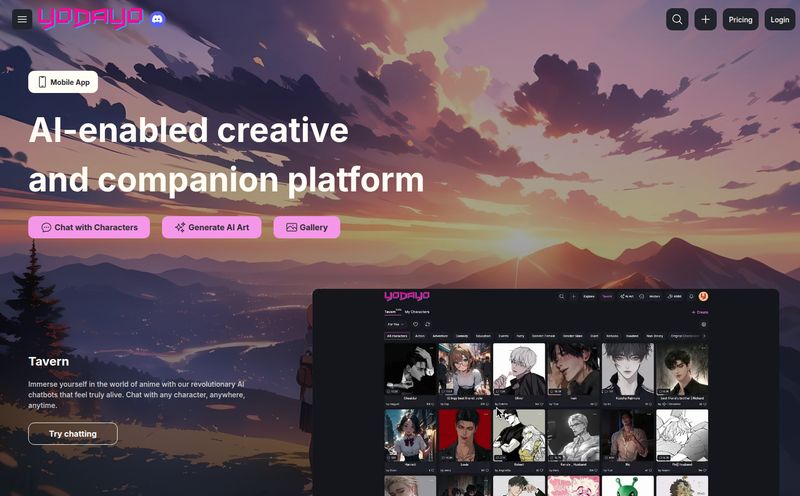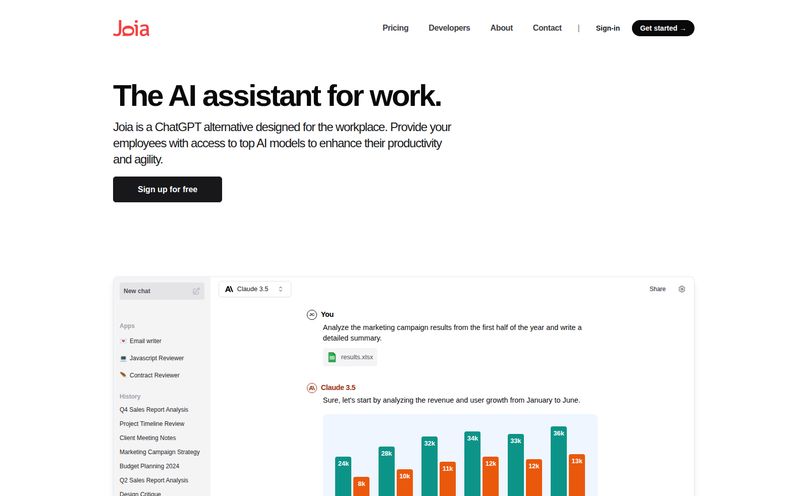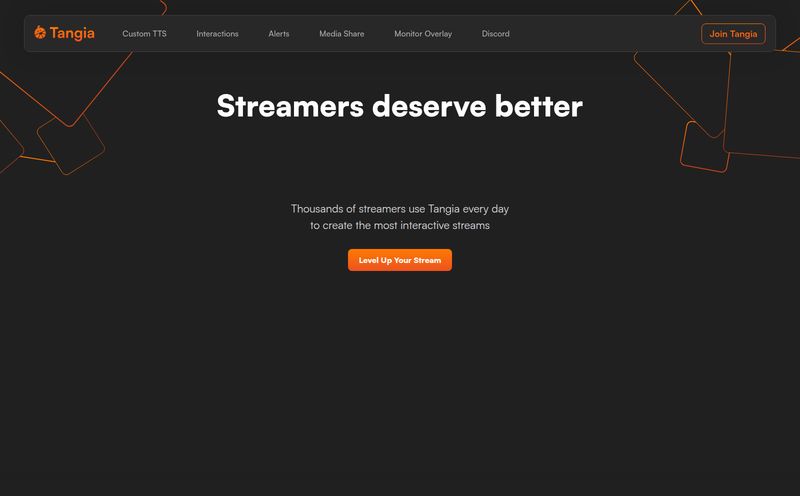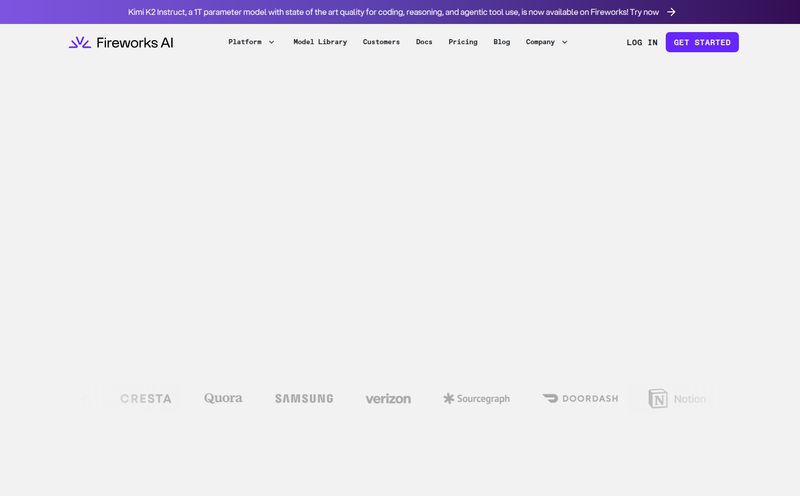Remember the summer of 2023? You couldn’t scroll through social media for more than thirty seconds without seeing it. The world was drenched in a vibrant, unapologetic shade of pink. Friends, celebrities, coworkers, even your grandma—everyone was suddenly a resident of Barbie Land. The culprit? A brilliantly simple and ridiculously fun tool: the Barbie Selfie Generator.
It was digital catnip. You’d upload a photo, and a moment later, AI magic would spit back a movie-style poster of you as a Barbie or Ken, complete with a custom tagline. It was everywhere. A pink digital tidal wave. You couldn't escape it, and honestly, for a glorious few weeks, nobody really wanted to. It was the perfect little piece of internet fluff to get everyone hyped for Greta Gerwig's blockbuster.
But if you’ve recently tried to relive those plastic-fantastic memories and Googled the generator, you were probably met with… well, nothing. A digital dead end. So what happened? Let's talk about it.
First Off, What Was the Barbie Selfie Generator?
For anyone who somehow missed the pink-pocalypse, the Barbie Selfie Generator was a promotional website created by Warner Bros. to market the Barbie movie. It was a one-trick pony, but man, what a trick. The premise was simple: upload a selfie, and the tool would automatically cut you out, place you against the iconic sparkling Barbie Land backdrop, and turn you into a doll. You could then choose to be a Barbie or a Ken and add a little tagline describing your doll-sona, like “This Barbie is an SEO blogger.” It was peak personal branding.
The beauty of it was its simplicity. There were no downloads, no complex settings, no learning curve. Just upload, tweak, and share. It was fun, engaging, and perfectly designed for viral sharing on platforms like Instagram, Twitter, and TikTok.
A Masterclass in Viral Marketing and Traffic Generation
As someone who lives and breathes SEO and traffic trends, I have to stand back and applaud. The Barbie Selfie Generator wasn’t just a fun toy; it was a textbook example of a perfect viral marketing campaign. I've seen brands spend millions trying to achieve what this simple tool did organically.
Why did it work so well? A few reasons come to mind.
- User-Generated Content (UGC) Gold: The tool empowered users to create their own content. Instead of the brand shouting “Go see our movie!” they handed us the megaphone and said, “Hey, make yourself the star.” Every single shared selfie was an ad for the movie, but it felt personal and authentic. This is the holy grail of organic reach.
- Perfect Timing: It launched right as the movie's marketing hype was reaching a fever pitch. It rode the wave of excitement, adding fuel to the fire. It wasn't just a marketing beat; it became the cultural conversation for a moment.
- Emotional Connection: Barbie is a brand loaded with nostalgia. The generator tapped into decades of memories while connecting them to a fresh, modern movie. It let everyone, regardless of age or gender, see themselves in this iconic world.
I remember my entire feed—from my usually-serious tech-bro friends to my aunt in Florida—was suddenly filled with grinning Kens and Barbies. It was inescapable, and a fascinating case study in how to capture the internet's notoriously short attention span.
The Mystery of the 404 Error: So Where Did It Go?
This brings us to the main event. If it was so popular, why can't you find it now? If you try to visit the old link, you’re greeted by the unceremonious “Not Found. The requested URL was not found on this server.” message. It's the internet equivalent of a vacant lot where a bustling pop-up shop used to be.
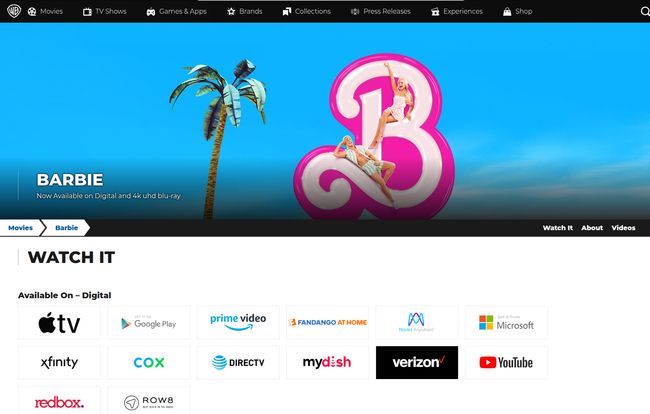
Visit Barbie Selfie Generator
And that’s exactly what it was: a pop-up. The Barbie Selfie Generator was never meant to be a permanent fixture on the web. This is a strategy called ephemeral marketing. The site served its purpose with spectacular success: it built massive, worldwide hype for the movie's theatrical release. Once the film was out, dominating the box office and heading for digital release on platforms like Prime Video and Apple TV, the generator’s job was essentially done.
Keeping a high-traffic site like that running costs money—server costs, maintenance, etc. From a marketing ROI perspective, it makes perfect sense to decommission it once the campaign's primary goal is achieved. It’s a bit of a bummer for us, but a smart business move. It leaves us with fond memories instead of becoming another piece of forgotten internet junk.
The Lasting Legacy of a Temporary Tool
Even though its gone, the generator's impact lingers. It’s a fantastic case study for digital marketers on the power of a simple, well-executed idea. It proves you don’t always need a complex, feature-rich app to make a splash. Sometimes, all you need is a single, killer feature that connects with people on a personal level.
It also highlights the growing trend of AI in creative marketing. While this was a fairly simple AI application (mostly background removal and image composition), it foreshadows a future where brands will offer even more sophisticated personalized experiences. The official Barbie movie website remains as the permanent digital hub, but the generator was the unforgettable opening act.
Craving a Barbie Makeover? Some Alternatives to Try
So the original is gone. Does that mean your dreams of becoming a doll are dashed forever? Not quite! While you can't get the official poster anymore, several photo editing apps have scrambled to offer similar experiences. It won't be quite the same, but they can scratch that itch.
| Alternative Tool | What It Does | Notes |
|---|---|---|
| YouCam Perfect | Offers AI avatars and 'magic avatar' features that can create doll-like versions of you in various styles. | A versatile app with lots of other photo editing features. The doll styles are more generic, not specifically 'Barbie'. |
| Fotor | Includes a 'Barbie filter' and AI-powered tools that can transform your photo into a cartoon or doll-like character. | They explicitly market a Barbie-style filter, making it one of the closer alternatives you can find. |
| Canva | More of a DIY approach. You can use their 'Background Remover' tool on your selfie and then place it on a pink background or Barbie-themed template. | Requires more work, but gives you full creative control over the final product. |
A Quick Look at the Pros and Cons in Hindsight
Looking back, the tool's strengths were obvious. It was incredibly easy to use, wildly fun and shareable, and it tapped into the cultural zeitgeist of the Barbie movie perfectly. The cons were, honestly, pretty minor. It was a bit of a one-trick pony, focusing only on the photo transformation, and the final image quality could be a bit iffy if you didn't start with a high-quality, well-lit photo. But let's be real, no one was using this to print a professional headshot. It was about the fun, and on that front, it delivered in spades.
Frequently Asked Questions About the Barbie Generator
Is the official Barbie Selfie Generator still available?
No, the official Barbie Selfie Generator is no longer available. It was a temporary promotional website for the Barbie movie and was taken down after the main promotional period ended.
Why was the Barbie Selfie Generator so popular?
It's popularity was a perfect storm of factors: it was free and incredibly easy to use, it launched at the peak of the Barbie movie hype, and it generated highly shareable, personalized content that made everyone feel part of the cultural moment.
Was the Barbie Selfie Generator free?
Yes, the tool was completely free to use. Its goal was marketing and engagement, not direct revenue.
Are there any good alternatives to the Barbie Selfie Generator?
While the official tool is gone, photo editing apps like Fotor and YouCam Perfect offer similar doll-style filters and AI avatar creators. For a more hands-on approach, you can use a tool like Canva to create your own poster.
Who made the Barbie Selfie Generator?
The generator was created by Warner Bros. as part of the official global marketing campaign for their blockbuster film, Barbie.
Gone but Not Forgotten
In the fast-moving world of digital trends, the Barbie Selfie Generator was a shooting star—brilliant, dazzling, and brief. It perfectly captured a moment in time, painting our digital world pink for a few unforgettable weeks. Its disappearance isn't a failure; it’s a lesson. It reminds us that sometimes, the most powerful marketing isn't about building something that lasts forever, but about creating an experience that everyone wants to be a part of. Even if its just for one summer.
Reference and Sources
- Official Barbie Movie Website - The main digital home for the film.
- Barbie on Prime Video - For watching the movie at home.
- Fotor - A photo editing tool with alternative doll-style filters.
